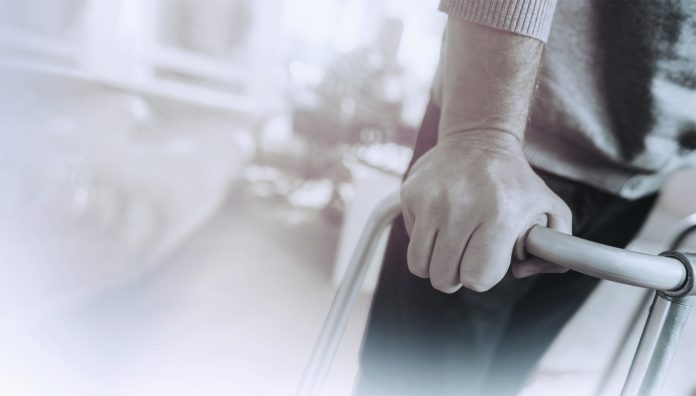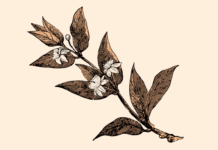It is estimated that falls in hospitals are significantly higher than in the community setting. This summary presents the best available evidence regarding the effectiveness of interventions to reduce falls in the elderly in nursing homes and hospitals. For the full review, refer to Interventions for preventing falls in older people in care facilities and hospitals.1
Background
The prevalence of falls in the elderly is generally underestimated due to many reasons such as who is reporting the incidence, time of reporting, severity of the incident and protocols for reporting.2 The incidence of falls in the elderly in hospitals was reported to be 1.7 falls per patient per year as opposed to 0.65 falls reported for elderly living in the community.3
A study done in 528 nursing homes in Europe found that three quarters of all residents’ falls occur either in their rooms or bathrooms, 41% during transfers between settings and 36% during walking. The authors also found that falls were less likely to occur in both low and high-care residents and in women.4
Interventions to reduce falls in aged care facilities and nursing homes include physical exercises, medication changes, surgery, management of urinary incontinence, fluid or nutrition therapy, psychological interventions, environment/assistive technology, social environment, education and other interventions.5 This summary will present the effectiveness of some of these interventions.
Characteristics of the studies
Randomised trials, including quasi-randomised, cluster-randomised trials, were included in the review. Trials with interventions to prevent falls in older people (mean age over 65 years), of either sex, in aged care facilities or hospitals were included.
Quality of the studies
Studies included in the report had high risk of bias due to lack of blinding. Overall, the quality of the evidence ranged from low to very low. The main sources of bias were selective reporting of data.
Conclusion
Vitamin D supplementation was the only intervention to have some benefit in reducing the rate of falls but not the risk of falls. All the other interventions had an unclear benefit.
Implications for research and practice
There were small benefits of various interventions on the risk of falls and falling rates in elderly in aged care facilities and hospitals. Future randomised controlled studies with focussed interventions such as supervised exercise, education and changes in organisational systems are warranted to inform clinical decision-making.
Results
- The following databases were searched: Cochrane Bone, Joint and Muscle Trauma Group Specialised Register (August 2017); Cochrane Central Register of Controlled Trials (2017, Issue 8); and MEDLINE, Embase, CINAHL and trial registers to August 2017.
- The primary outcome measures were rate of falls and number of fallers (risk of falling). The secondary outcomes were the number of participants sustaining fall-related fractures, complications of the interventions and economic outcomes.
- The review included 95 studies with a total of 138,164 participants; 71 of the total studies were undertaken in aged care facilities and 24 studies were performed in hospitals.
- In aged care facilities, 17 studies investigated the effect of exercise compared with control. There was no benefit of the effect of exercise on rate of falls (RaR 0.93, 95% CI 0.72 to 1.20; 2,002 participants). Exercise also made no difference to the risk of falling (RR 1.02, 95% CI 0.88 to 1.18; 2,090 participants).
- In aged care facilities, general medication review was investigated in 12 studies. It was found that medication changes may make little or no difference to the rate of falls (RaR 0.93, 95% CI 0.64 to 1.35; 2,409 participants) or the risk of falling (RR 0.93, 95% CI 0.80 to 1.09; 5,139 participants, 6 studies).
- In aged care facilities, vitamin D supplementation was tested in 4 studies with 4,512 participants. It was found that it probably reduced the rate of falls (RaR 0.72, 95% CI 0.55 to 0.95), but probably made little or no difference to the risk of falling (RR 0.92, 95% CI 0.76 to 1.12). However, it was worth noting that the population included in these studies had low vitamin D level.
- In hospitals, three studies investigated the effect of additional physiotherapy (supervised exercises) in rehabilitation wards. All studies were very low quality and hence the benefit of the intervention was not certain on the rate of falls (RaR 0.59, 95% CI 0.26 to 1.34; 215 participants, 2 studies), or the risk of falling (RR 0.36, 95% CI 0.14 to 0.93; 83 participants, 2 studies).
- Other interventions such as the effects of bed and chair sensor alarms in hospitals, tested in two studies (28,649 participants), showed little or no benefit on the rate of falls (RaR 0.60, 95% CI 0.27 to 1.34) or risk of falling (RR 0.93, 95% CI 0.38 to 2.24).
References
- Cameron ID, Dyer SM, Panagoda CE, Murray GR, Hill KD, Cumming RG, Kerse N. Interventions for preventing falls in older people in care facilities and hospitals. Cochrane Database of Systematic Reviews 2018, Issue 9. Art. No.: CD005465. DOI: 10.1002/14651858.CD005465.pub4. At: https://www.cochrane.org/CD005465/MUSKINJ_interventions-preventing-falls-older-people-care-facilities-and-hospitals
- Hill AM, Hoffmann T, Hill K, Oliver D, Beer C, McPhail S, et al. Measuring falls events in acute hospitals-a comparison of three reporting methods to identify missing data in the hospital reporting system. Journal of the American Geriatrics Society 2010;58(7):1347–52. At: https://www.ncbi.nlm.nih.gov/pubmed/20487077
- Rubenstein LZ. Falls in older people: epidemiology, risk factors and strategies for prevention. Age and Ageing 2006; 35 Suppl 2:ii37–41. At: https://www.ncbi.nlm.nih.gov/pubmed/16926202
- Rapp K, Becker C, Cameron ID, Konig HH, Buchele G. Epidemiology of falls in residential aged care: analysis of more than 70,000 falls from residents of Bavarian nursing homes. Journal of the American Medical Directors Association 2012;13(2):187.e1–6. At: https://www.ncbi.nlm.nih.gov/pubmed/21816682
- Lamb SE, Hauer K, Becker C. Manual for the fall prevention classification system. profane.eu.org/documents/Falls Taxonomy.pdf



 Pharmacists have always prescribed, but they have the potential to prescribe much more
Pharmacists have always prescribed, but they have the potential to prescribe much more



 Sponsorship information
Sponsorship information


 Talking to patients who have questions
Talking to patients who have questions







